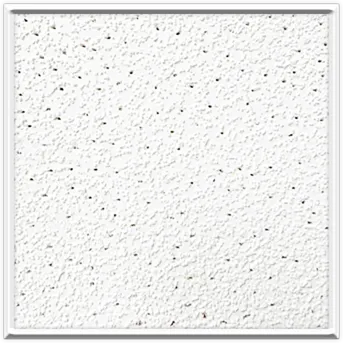Dec . 11, 2024 20:26 Back to list
ceiling t grid
Understanding Ceiling T Grids A Comprehensive Overview
Ceiling T grids, also known as ceiling tiles or suspended ceilings, are an important component in modern architectural design and construction. These systems not only serve aesthetic purposes but also play crucial roles in enhancing acoustics, insulation, and even lighting within a space. This article aims to provide an in-depth understanding of ceiling T grids, their components, advantages, installation processes, and applications.
What are Ceiling T Grids?
Ceiling T grids are a framework system used to support ceiling tiles. They consist primarily of a network of metal or lightweight materials that create a grid-like structure on which the tiles rest. The T shape of the grid refers to the profile of the main runners and cross tees that form the frame. This system is widely used in commercial buildings, offices, schools, and retail spaces due to its versatility and cost-effectiveness.
Components of Ceiling T Grids
The primary components of a ceiling T grid system include
1. Main Runners These are the long, horizontal metal pieces that run the length of the room. They are the backbone of the grid system and are typically spaced four feet apart.
2. Cross Tees These are shorter pieces that connect perpendicular to the main runners. They come in various sizes, allowing for different tile sizes or layouts.
3. Wall Angles These are installed around the perimeter of the room to provide a secure attachment point for the main runners.
4. Ceiling Tiles The decorative and functional finishing components that are laid into the T grid structure. They come in a variety of materials, sizes, and finishes, allowing for customization based on the design intent.
Advantages of Ceiling T Grids
Ceiling T grids offer numerous benefits, making them a popular choice in many construction projects
- Aesthetic Appeal They allow for various design options, and the ceiling tiles can be chosen based on the desired look, from sleek and modern to traditional.
- Acoustic Control Many ceiling tiles are designed to absorb sound, helping to reduce noise distractions in workspaces and improving overall acoustics
.- Accessibility and Maintenance Suspended ceilings can easily be removed, allowing for quick access to plumbing, electrical, and HVAC systems. This makes maintenance and repairs more straightforward than with traditional ceilings.
- Energy Efficiency Ceiling T grids can be combined with insulation materials, helping to improve energy efficiency in buildings.
ceiling t grid

- Flexibility The modular nature of the T grid system allows for easy reconfiguration of spaces, accommodating changes in office dynamics or function over time.
Installation Process
Installing a ceiling T grid involves several key steps
1. Planning and Measurement Accurate measurements of the space are crucial. This includes determining the height at which the ceiling will be installed.
2. Installing Wall Angles These are fastened to the walls around the perimeter of the room at the desired height.
3. Hanging Main Runners The main runners are hung from structural elements above, often using wires or brackets for support.
4. Adding Cross Tees Cross tees are inserted into the main runners to create the grid pattern, ensuring they are level.
5. Inserting Ceiling Tiles Finally, the chosen ceiling tiles are laid into the grid, completing the installation process.
Applications of Ceiling T Grids
Ceiling T grids are versatile and can be applied in various settings
- Commercial Spaces They are standard in offices, retail stores, and restaurants to create an inviting atmosphere while providing functional benefits.
- Educational Institutions Classrooms and lecture halls benefit from improved acoustics and ease of maintenance.
- Healthcare Facilities Hospitals and clinics often use T grid systems, incorporating tiles designed for sound absorption and cleanliness.
- Residential Areas Homeowners are increasingly adopting suspended ceilings in basements and other spaces for added aesthetic value and functionality.
Conclusion
Ceiling T grids represent an essential aspect of contemporary building design, offering a blend of functionality, aesthetics, and efficiency. Their modular nature provides flexibility, making them suitable for a wide range of applications across different sectors. As architects and builders continue to innovate, the potential for ceiling T grids to adapt to new technologies and design trends will likely enhance their relevance in future constructions. Understanding the mechanics and benefits of these systems is vital for anyone involved in the design or renovation of interior spaces.
-
Quality Ceiling Trap Doors & Access Panels | Easy & Secure AccessNewsAug.30,2025
-
Durable Ceiling T Grid Systems | Easy InstallationNewsAug.29,2025
-
PVC Gypsum Ceiling: Durable, Laminated Tiles for Modern SpacesNewsAug.28,2025
-
Pvc Gypsum Ceiling Is DurableNewsAug.21,2025
-
Mineral Fiber Board Is DurableNewsAug.21,2025
-
Ceiling Tile Clip Reusable DesignNewsAug.21,2025







